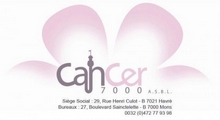Potassium-Argon (K-Ar) relationship is essentially the most widely utilized technique of radiometric dating. Potassium is a element in plenty of widespread minerals and can be used to determine the ages of igneous and metamorphic rocks. The Potassium-Argon dating methodology is the measurement of the accumulation of Argon in a mineral. Several minerals incorporate tiny quantities of uranium into their construction when they crystallise.
In which of the given rocks is radiometric courting least useful?
In this diagram the radioactive ages for rock models (vertical axis) are plotted against the strata ages determined by relative positions (horizontal axis). It could be clearly seen that usually there is agreement, with the radioactive ages being in the best order based on the relative positions of the rock layers within the sequence. This is exactly what could be produced by an underlying systematic physical trigger for accelerated radioactive decay. One frequent method for relative relationship is stratigraphy or the study of rock strata.
Why is radiometric dating not helpful for sedimentary rocks?
These methods are applicable to materials which are up to about one hundred,000 years previous. However, once rocks or fossils turn into much older than that, all of the « traps » in the crystal buildings turn into full and no more electrons can accumulate, even if they are dislodged. The fee of decay for so much of radioactive isotopes has been measured and doesn’t change over time. Thus, every radioactive isotope has been decaying on the identical price because it was shaped, ticking alongside frequently like a clock. For instance, when potassium is integrated right into a mineral that varieties when lava cools, there is not any argon from earlier decay (argon, a gasoline, escapes into the ambiance while the lava continues to be molten).
Of the three primary rock varieties, igneous rocks are most suited for radiometric relationship. Fission monitor dating is commonly used on apatite, zircon and monazite.
Which best describes radiometric dating?
In reality, scientists use a mixture of relative and numerical courting to ascertain the ages of rocks and fossils. Doing radiometric relationship on every single rock would be time-consuming and costly. So, we usually use relative dating to come up with a ballpark after which use numerical courting for particular objects like fossils. This system is highly favoured for accurate courting of igneous and metamorphic rocks, by way of many alternative methods.
It was only in the early a part of the twentieth century, when isotopic relationship strategies have been first utilized, that it turned potential to find absolutely the ages of the rocks containing fossils. Some minerals in rocks and organic matter (e.g., wooden, bones, and shells) can comprise radioactive isotopes. The www.hookupradar.net/nevermet-review/ abundances of father or mother and daughter isotopes in a sample can be measured and used to determine their age.
